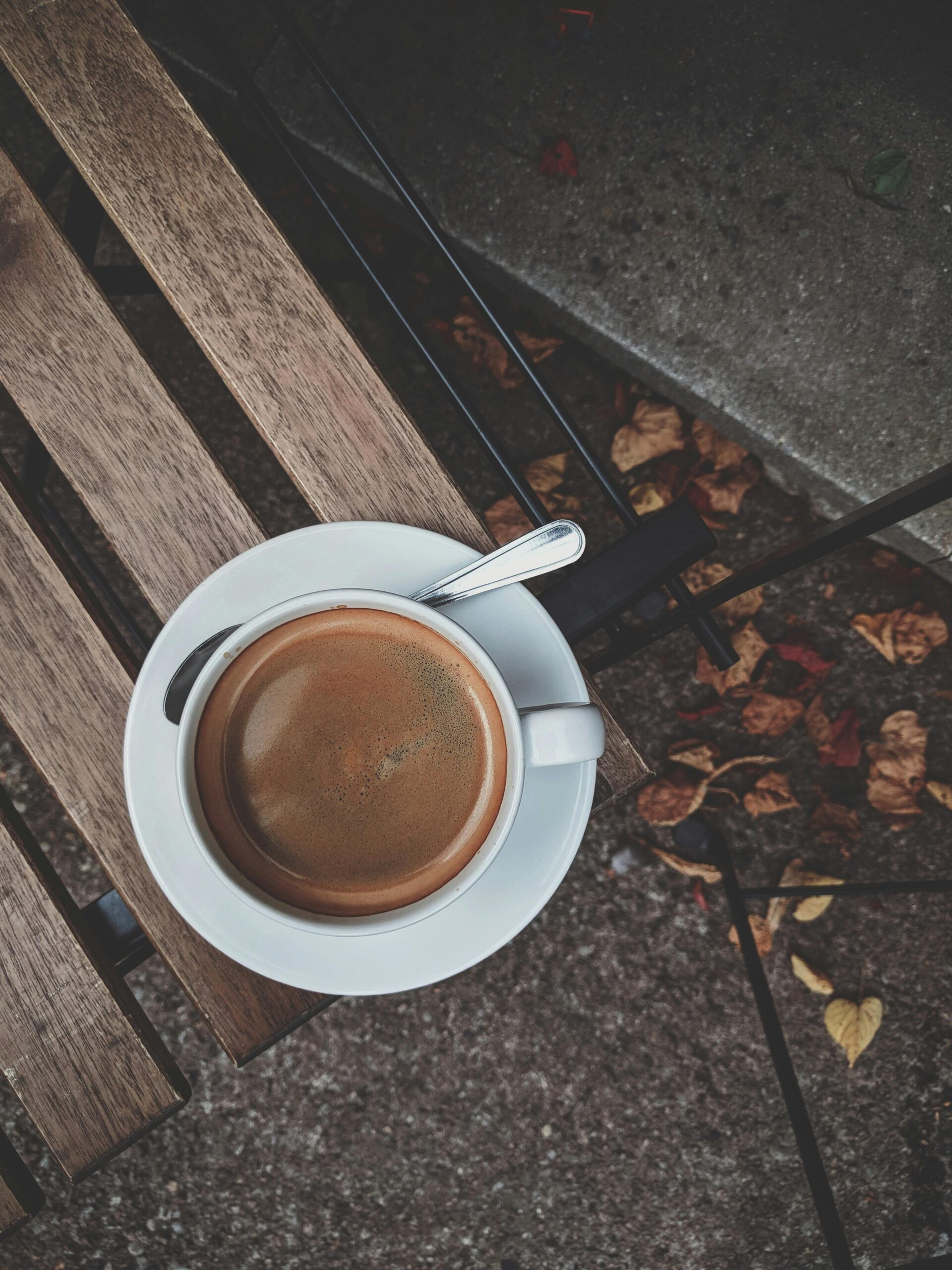The world of coffee offers an incredibly rich tapestry of flavors, aromas, and textures, far beyond what most people realize. While many enjoy their daily brew as a simple routine, delving into the nuances of different origins and roasts can be a truly delightful experience. Hosting a coffee tasting party at home is an exceptional way to unlock this sensory adventure, sharing your passion with friends and family. It transforms a casual gathering into an insightful exploration, akin to a wine tasting but with the inviting warmth and comforting familiarity of coffee.
Imagine guiding your guests through a curated selection of unique coffees, discussing their distinct notes of fruit, chocolate, or spice. Picture a lively conversation sparked by shared discoveries, as everyone learns to identify subtle differences and personal preferences. This engaging event is not just about drinking coffee; it’s about refining your palate, expanding your knowledge, and deepening your appreciation for this beloved beverage. It offers a fun, interactive, and relatively simple way to elevate your home entertaining, creating memorable moments centered around exceptional coffee.
This article provides a comprehensive guide on how to host a coffee tasting party at home, ensuring a seamless and enriching experience for everyone involved. We’ll cover everything from selecting your coffees and preparing your tasting station to guiding your guests through the sensory journey and facilitating insightful discussions. Whether you’re a seasoned coffee enthusiast or a curious beginner, prepare to transform your living space into a vibrant hub of coffee exploration, delighting your guests with a truly unique and educational gathering.
Setting the Stage: Essential Preparations
A successful coffee tasting party begins long before your guests arrive, with careful planning and preparation of your tasting environment. Thoughtful arrangements create a welcoming atmosphere. This foundational work ensures that the focus remains on the coffee itself, allowing its qualities to shine without distraction. It sets the tone for a structured yet enjoyable sensory exploration.
1. Curating Your Coffee Selection
The heart of your tasting party lies in the coffees you choose to feature, as variety is key to showcasing diverse profiles. Aim for 3-5 different single-origin coffees to provide a good comparative experience without overwhelming the palate. Consider selecting coffees with distinct characteristics, such as a bright Ethiopian, a balanced Colombian, a full-bodied Brazilian, or a fruit-forward natural-processed coffee. Opt for freshly roasted whole beans, ideally roasted within 5-14 days of your party, to ensure peak flavor.
Purchase enough of each coffee to brew multiple rounds for your anticipated number of guests, plus a little extra for practice. Reach out to local specialty coffee roasters or reputable online stores for guidance on selecting diverse and high-quality beans. Inform guests in advance if you plan to provide background on each coffee’s origin, processing, and tasting notes. This initial selection sets the stage for a truly engaging and educational experience for all attendees.
2. Gathering Your Brewing Equipment
Consistency in brewing is paramount for a fair tasting, so using identical brewing methods for each coffee is crucial. The pour-over method (like Hario V60 or Chemex) is often preferred for tastings due to its clarity and ability to highlight nuanced flavors, but a French Press can also work well for a fuller-bodied experience. Ensure you have enough brewers for efficient preparation or plan to brew each coffee in batches. This meticulous approach ensures that any differences in taste are attributable to the beans themselves.
Essential equipment includes a burr grinder (a consistent grind is vital), a digital scale (for precise coffee-to-water ratios), a gooseneck kettle (for controlled pouring), and plenty of filtered water. You’ll also need tasting cups (small ceramic or glass cups are ideal), spoons for slurping (optional, but professional), and vessels for serving the brewed coffee. Having all your tools clean and ready before guests arrive prevents rushed moments.
3. Creating the Tasting Environment
The setting significantly influences the sensory experience, so aim for a clean, well-lit space free from competing aromas. Clear your tasting area of strong perfumes, scented candles, or lingering cooking odors, as these can interfere with coffee’s delicate aromatics. Ensure comfortable seating for your guests and good lighting to observe the coffee’s color and clarity. Provide pens and tasting scorecards or simple notebooks for guests to record their impressions.
Prepare a separate table or station for brewing to minimize clutter in the tasting area, making the main space conducive to focused evaluation. Consider simple decorations that complement the coffee theme, perhaps some fresh coffee beans in a bowl or a small plant. A calm and inviting atmosphere encourages focused attention on the intricate details of each coffee.
The Tasting Protocol: Guiding the Sensory Journey
Once your setup is complete, the magic begins with the actual tasting, which should follow a structured approach to maximize sensory discovery. Guiding your guests through each step ensures a comprehensive evaluation and facilitates meaningful discussions. This structured process helps everyone focus on distinct characteristics, preventing palate fatigue. It transforms casual sips into deliberate acts of sensory exploration.
1. The Grinding and Aromatic Introduction
Begin each tasting round by freshly grinding the designated coffee, allowing everyone to experience its vibrant aroma. Pass around a small bowl of the ground coffee for guests to inhale deeply, noting initial impressions before any brewing takes place. Encourage them to describe what they smell, even if they can’t quite pinpoint specific notes. This “dry aroma” provides the first clue to the coffee’s potential flavor profile.
This initial aromatic engagement serves as a primer for the senses, setting the stage for the complexity to come. It also highlights the importance of fresh grinding in unlocking coffee’s full aromatic potential. Remind guests that there are no “right” or “wrong” answers at this stage, fostering an open and experimental mindset for the tasting.
2. The Brewing Ritual and “Wet” Aroma
Proceed with brewing each coffee consistently, using your pre-measured ratios and temperature-controlled water. As the coffee brews, pay attention to the “wet aroma” – the scent that emerges as the hot water interacts with the grounds. This aroma often differs from the dry aroma and can reveal more developed notes. Allow guests to observe the brewing process if using methods like pour-over, adding to the immersive experience.
Once brewed, pour a small amount of each coffee into the designated tasting cups for your guests. Present them in order, perhaps from lightest to darkest roast, or by region for a geographical journey. Ensure each cup is clearly labeled to avoid confusion, allowing for easy reference during the discussion. This step moves from passive observation to active preparation, building anticipation.
3. The Sensory Evaluation: Sight, Smell, Taste, and Texture
Guide your guests through a systematic evaluation of each coffee, encouraging them to engage all their senses. First, observe the sight of the coffee: its color, clarity, and any visible crema (if applicable). Next, revisit the aroma by bringing the cup to the nose and inhaling deeply, noting new nuances that have developed. Prompt guests to swirl the coffee gently to release more aromatics. This multi-sensory approach enhances the richness of the experience.
Then comes the taste: instruct guests to take a small sip, letting the coffee wash over their entire tongue. Encourage them to “slurp” if comfortable, as this aerates the coffee and releases more aromatics. Focus on flavor (what specific tastes are present?), acidity (is it bright, dull, lively?), body (is it light, heavy, creamy?), and aftertaste (what flavors linger?). Prompt guests to record their thoughts on their scorecards.
4. Discussion and Discovery
After each coffee has been sampled, facilitate a discussion, inviting guests to share their observations and compare notes. Encourage open dialogue about perceived flavors, aromas, and textures, even if they differ, as personal perception is a key part of tasting. Ask guiding questions: “What was your first impression?”, “Did you notice any fruit or floral notes?”, or “How did the body feel on your palate?”. This interactive component transforms individual tasting into a shared learning experience.
Emphasize that there’s no single “correct” answer in coffee tasting; it’s about personal enjoyment and perception. Use a coffee flavor wheel as a visual aid to help guests articulate their sensory experiences, providing a common vocabulary for describing complex flavors. This collaborative exploration helps to solidify new understandings and appreciation for the nuanced world of coffee.
Palate Cleansing and Advanced Tips
Maintaining palate sensitivity throughout the tasting is crucial for accurate discernment of flavors. Providing effective palate cleansers helps reset the taste buds between different coffee samples. This often overlooked detail significantly enhances the precision and enjoyment of your coffee tasting. It ensures that each new coffee is judged on its own merits.
1. Essential Palate Cleansers
Offer simple, neutral palate cleansers to refresh the taste buds between coffee samples. Water, ideally room temperature, is the most effective and essential cleanser, so ensure plenty of glasses and a pitcher are available. Plain, unsalted crackers or slices of baguette can also be provided, as their neutral starch helps absorb lingering flavors without introducing new ones. Avoid anything with strong flavors or sugars, which can interfere with the subtle notes of coffee.
Remind guests to take a sip of water or a bite of cracker after each coffee to cleanse their palate. Encourage them to wait a minute or two before tasting the next sample, allowing their senses to fully reset. This simple practice ensures that each new coffee is evaluated without interference from the previous one, enhancing the clarity of flavors.
2. Spitting (Optional)
For serious tasters or those sensitive to caffeine, providing a spittoon (a small cup or bowl for spitting out coffee after tasting) is an option, as it’s common practice in professional coffee cupping. While not necessary for a casual home party, it can help prevent palate fatigue and excessive caffeine intake. However, this may not be suitable for all social settings. Consider your guests’ comfort levels.
If offering a spittoon, clearly explain its purpose to guests beforehand, ensuring everyone understands this professional tasting technique. Reassure them that it’s perfectly acceptable to swallow or spit, depending on their preference and comfort. The goal is to maximize their tasting experience while managing caffeine levels.
3. Tasting Scorecards and Flavor Wheels
Provide each guest with a simple scorecard or worksheet to record their observations for each coffee. Include sections for aroma, flavor, acidity, body, aftertaste, and overall impression. A 5-point scale can be used for rating different attributes. Distribute coffee flavor wheels as a reference tool; these visual aids help guests identify and articulate the wide range of flavors and aromas found in coffee. This structured approach encourages thoughtful analysis.
Encourage guests to jot down immediate impressions, even if they can’t precisely name a flavor initially. The goal is to capture their raw sensory experience. These scorecards facilitate comparison and discussion at the end of the tasting, making it easier for guests to recall their perceptions of each coffee. They transform subjective experience into a more concrete analysis.
Host Your Unforgettable Coffee Tasting Party
Hosting a coffee tasting party at home is a delightful and enriching way to share your passion for specialty coffee, transforming a simple gathering into a memorable sensory journey. By meticulously selecting diverse coffees, preparing your brewing station with precision, and guiding your guests through a structured tasting protocol, you unlock a deeper appreciation for this complex beverage. It’s an opportunity to refine palates, spark engaging conversations, and discover the incredible spectrum of flavors hidden within each bean.
Embrace the joy of shared discovery, fostering an atmosphere of curiosity and enjoyment rather than strict judgment. Whether your guests are seasoned connoisseurs or curious newcomers, your carefully curated event will provide a unique and educational experience. So, gather your beans, ready your brewers, and prepare to delight your senses and those of your friends with an unforgettable exploration of the vibrant world of coffee.

